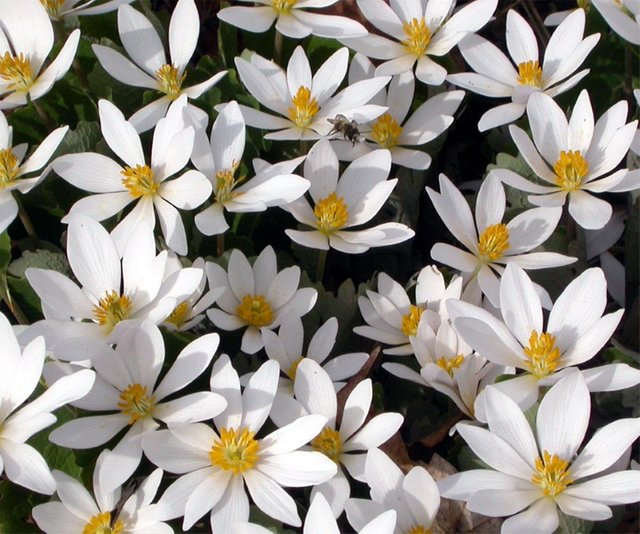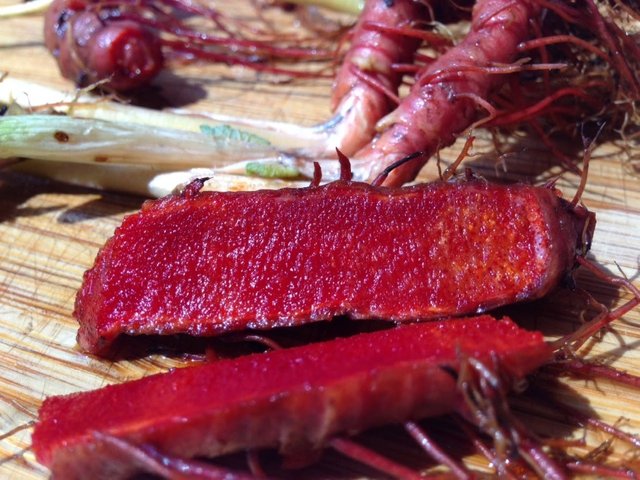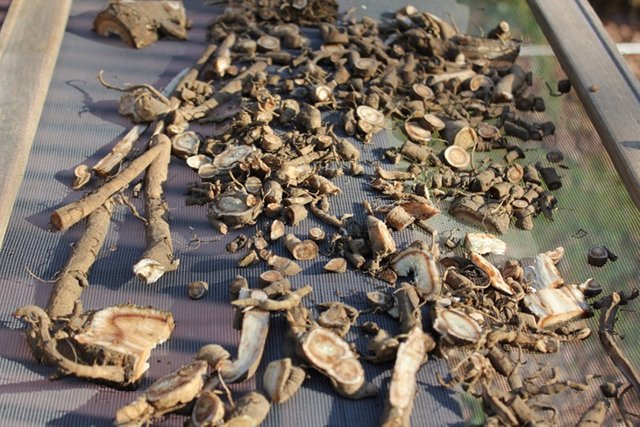Medicinal Forest Garden: Growing and Harvesting Bloodroot for Profit

Bloodroot (Sanguinaria Canadensis) gets its name from the torch red color of its roots. It is native to eastern North America and can be found in the woodlands as far south as Florida and as far north as Nova Scotia. Bloodroot was commonly used by Indian tribes for centuries as a fabric dye, face paint, and as an antiseptic. Early settlers discovered the many benefits of the root and began using it to dye clothing. It became so popular that Europeans began importing the root for use as a dye, cough syrup and was even used as a narcotic in the seedy underbelly of European cities.

By the mid 1800's bloodroot was being used to treat various forms of skin cancers. Not only treating them but curing them. Today, pharmaceutical companies are researching the root for its cancer fighting properties and it can even be found in many herbal salves for the treatment of skin cancer. (This author is not recommending that you treat your own skin cancers with a salve containing bloodroot. It is my understanding that some companies that sell these salves create caustic formulas with bloodroot which can greatly damage your skin, so beware).
Unfortunately, bloodroot is now on the decline. Due to over-harvesting of the root, it is now on the U.S. Department of Agriculture's endangered species list. Because of this, many woodland medicinal gardeners have begun cultivating bloodroot and are realizing profits of around $19.00 per pound. The largest portion of bloodroot in the United States is sold to herbal companies for use in medicinal salves but due to interest from pharmaceutical companies, some growers are enjoying much richer profits from the sale of their roots.
How to Grow Bloodroot at Home
Bloodroot grows best in shaded areas such as a wooded lot or forest garden. It flourishes in areas where it only receives around 20% of the day's sunshine. Bloodroot propagates best from rhizome division. Rhizome division is when you take an existing root and cut it into several sections and plant the individual sections, like planting potatoes.
Bloodroot can also be planted by seed, but the seed can be difficult to find because it must be fresh and not dried out like most seeds are. Because of this, most gardeners prefer rhizome division as a means of propagation.

If planting with rhizomes, late summer is the preferred time for planting. Each division of root must have an eye or bud for a new plant to form. Plant the section of root horizontally about one inch deep in the soil with the eye or bud closest to the surface. The root should begin to flower the following spring. Just be sure not to divide the root when it is flowering, it must be in a dormant state. And remember to wear gloves when handling the bloodroot (when harvesting as well as drying and storing) as it can irritate the skin. Also, it is very important to keep animals and children away from bloodroot. If ingested, bloodroot can be very dangerous.
If you are able to find fresh seed that is not dried out, you will need to plant the seeds approximately 2 inches apart and half an inch deep. Cover the top soil with 2 inches of leaf mulch. You probably won't see any growth until the second spring after planting. The seeds require a time of stratification before they will propagate.
Bloodroot can be harvested after 4 or 5 years. The roots slowly grow larger year after year. If you plan to sell your roots, then the longer you can allow it to grow the more money you will be able to make per root since it is sold by the pound. When harvesting bloodroot (when the flower is in bloom), always remember to cut a small portion of the root that has an eye or bud on it and replanting that small portion. Since bloodroot is endangered, this is the best practice when harvesting in the wild. This will ensure that a new plant will emerge the following year.
Drying Bloodroot at Home
Before bloodroot can be sold it must first be dried. In order to do this you will need a screen to place the roots on. The screen will allow you to rinse any dirt off of the roots prior to drying. Roots should be cleaned as much as possible. Poorly cleaned roots may cost you money when you go to sell them. After rinsing the dirt away, place the screens out in direct sun light. Make sure there is a little space between each root. Turn the roots over every couple of days until they are dried. While drying, the roots will shrink by approximately 25%. Be sure to keep them from getting wet again. If it looks like rain, bring them indoors to continue drying.

Where Do I Sell Bloodroot?
If you try to search for buyers of bloodroot online, you probably won't find any. This is because most bloodroot is sold to buyers who regularly deal with other types of roots such as ginseng. Ginseng buyers and dealers often trade in many different herbs and roots. As ginseng is federally regulated and can only be harvested from September 1 to December 31 every year, dealers will trade in other crops throughout the rest of the year. You can find a list of ginseng dealers by going to your state's Dept. of Agriculture.
Bloodroot can also be sold to herbalists. Many natural healers who practice herbal medicine will purchase fresh herbs and roots straight from woodland farmers for the freshest possible crops. Many local herb stores will also purchase fresh roots from gardeners for the same reason.
Much information about bloodroot can be found online and this author recommends that you do additional research about growing, harvesting, and drying it, as well as about the dangers of handling or using bloodroot for medicinal purposes.